Abstract
Marketing strategies are critical for enhancing HMO enrollments among Medicaid beneficiaries when they are provided a choice of health plans. This study examined one component of marketing HMOs--the method of communicating the HMO's attributes. The purpose of the analysis was to determine if characteristics of Medicaid beneficiaries who enroll in HMOs vary by method of communicating information about health plan options. Data were analyzed from the marketing component of California's Prepaid Health Research, Evaluation, and Demonstration (PHRED) project. Five communication methods are examined in the article: brochure, film, county eligibility worker presentation, state representative presentation, and HMO representative presentation. The analysis reveals that each communication method is most effective with a different type of beneficiary. No single consumer characteristic is related to HMO enrollment across all five methods, although lack of a private physician and dissatisfaction with a current provider are associated with choice in four methods. Film is the best method for attracting persons who have an ongoing relationship with a provider.
Full text
PDF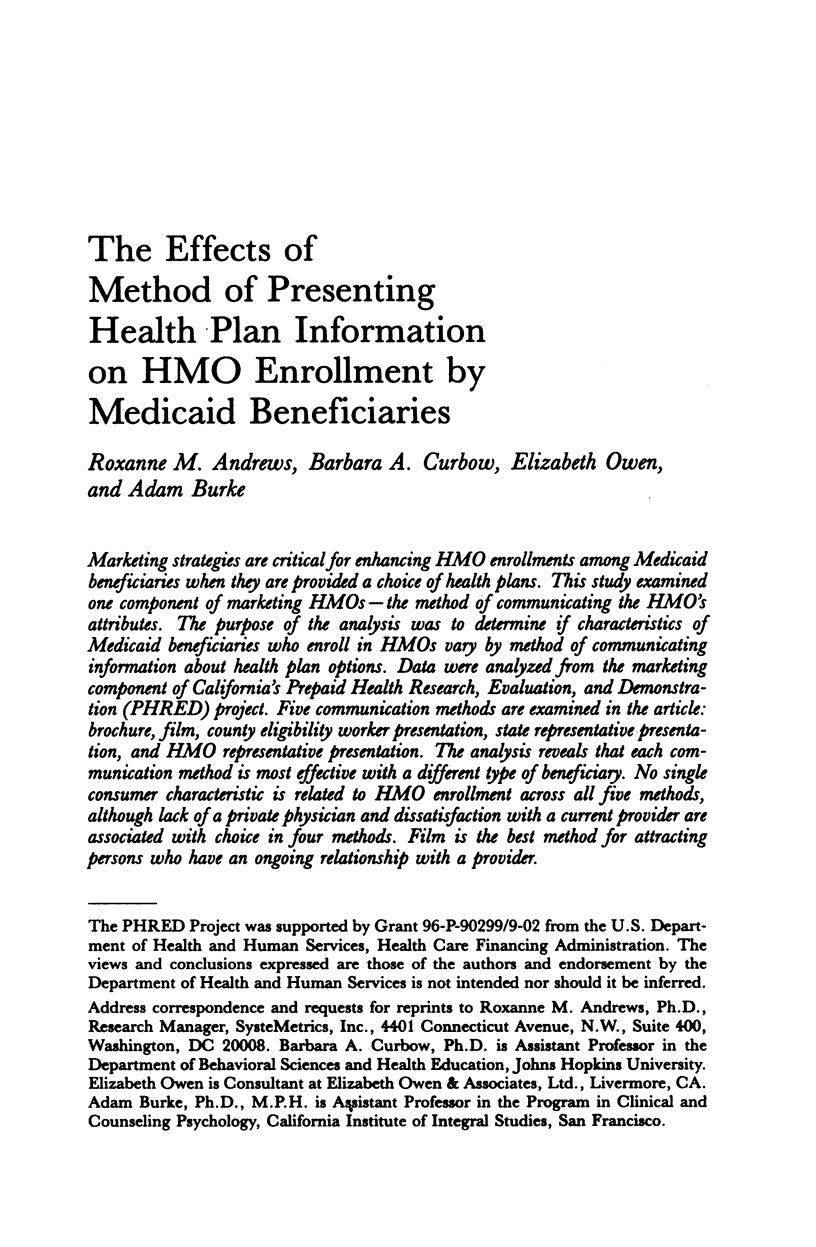
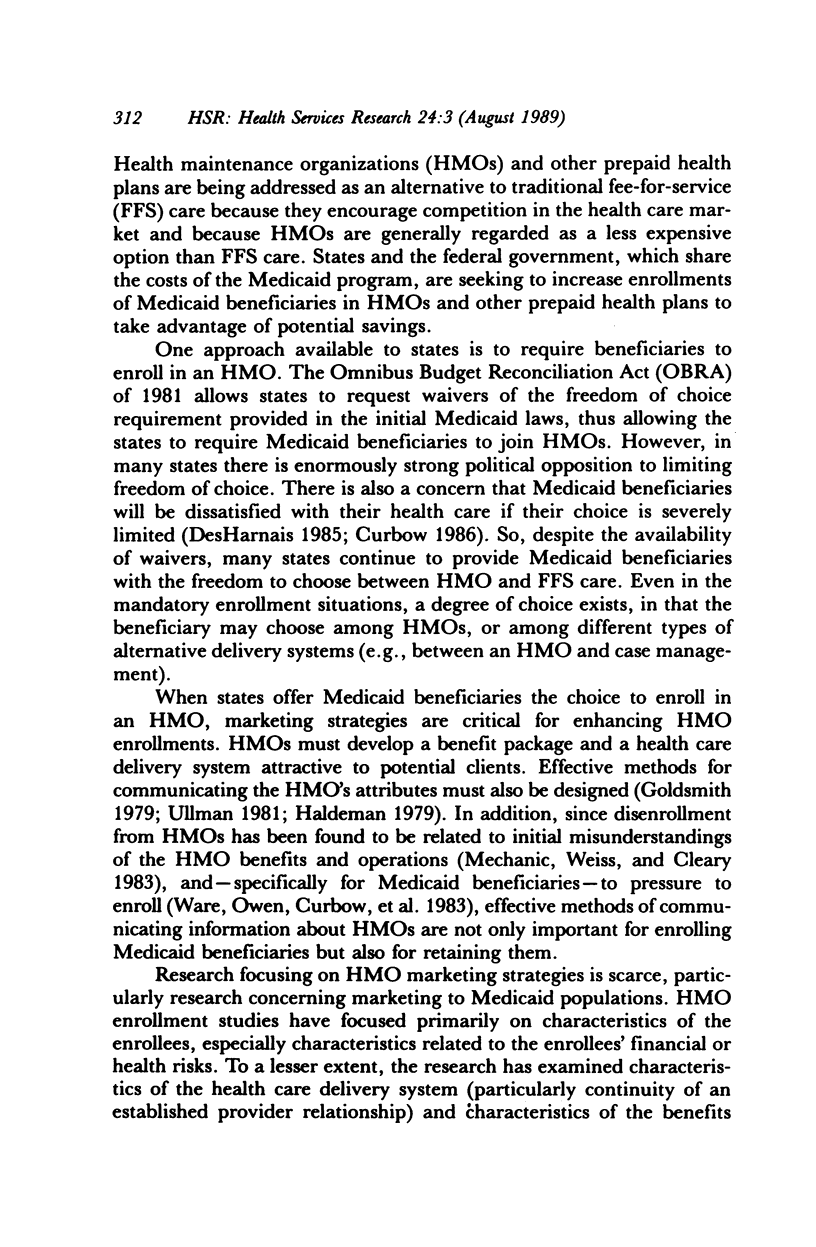
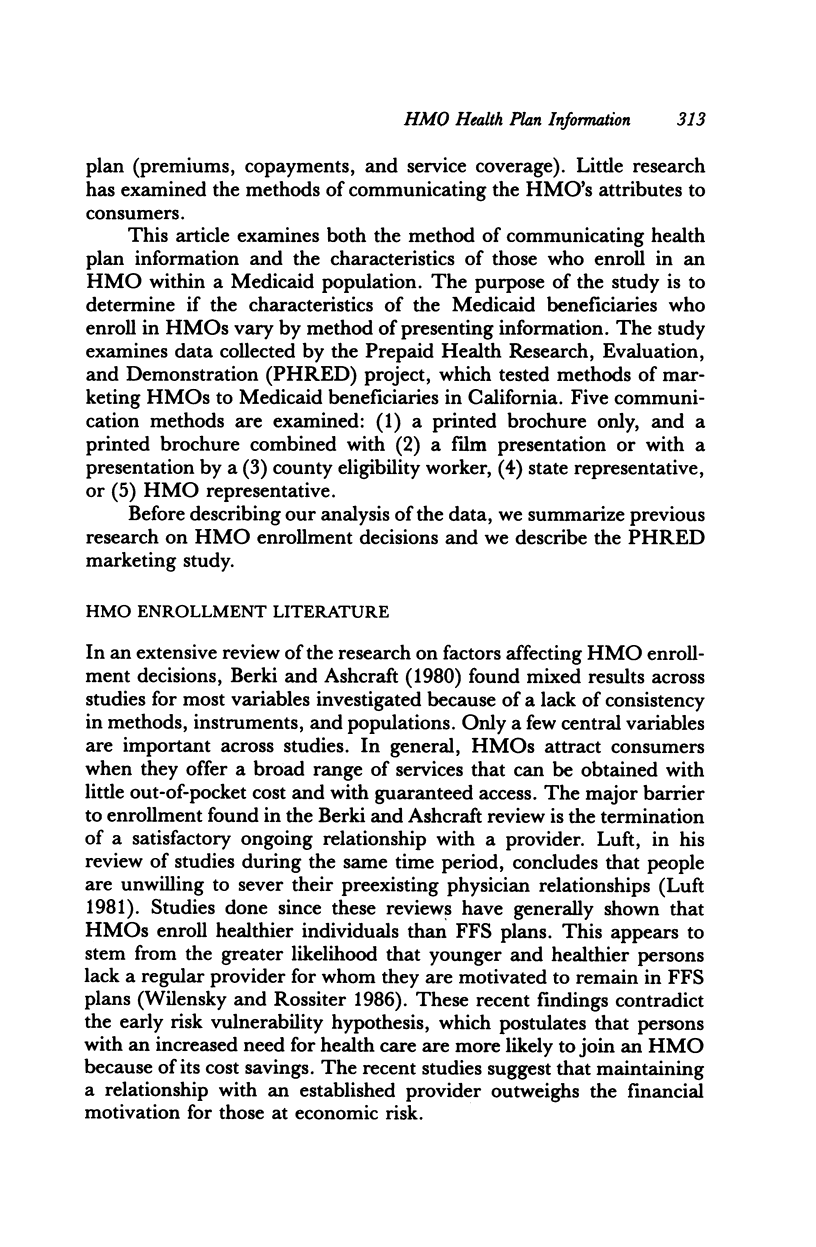
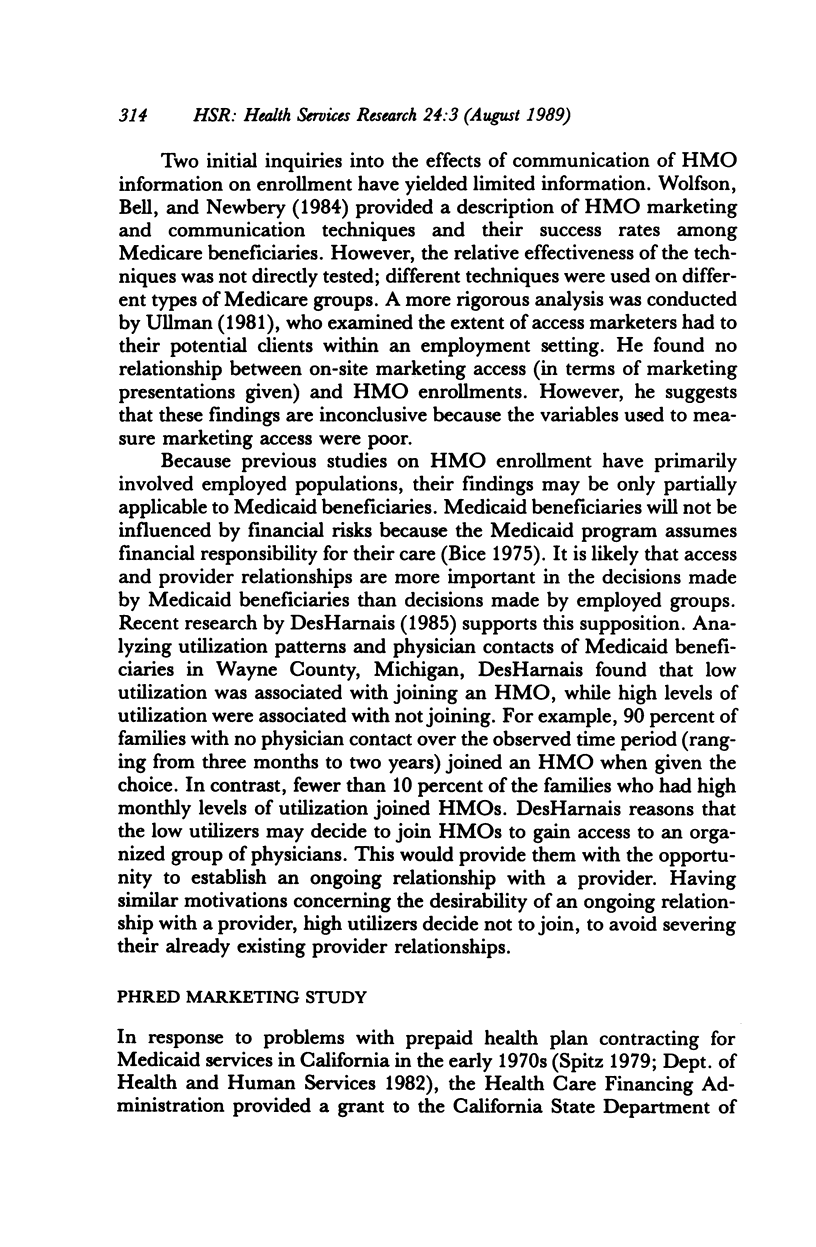
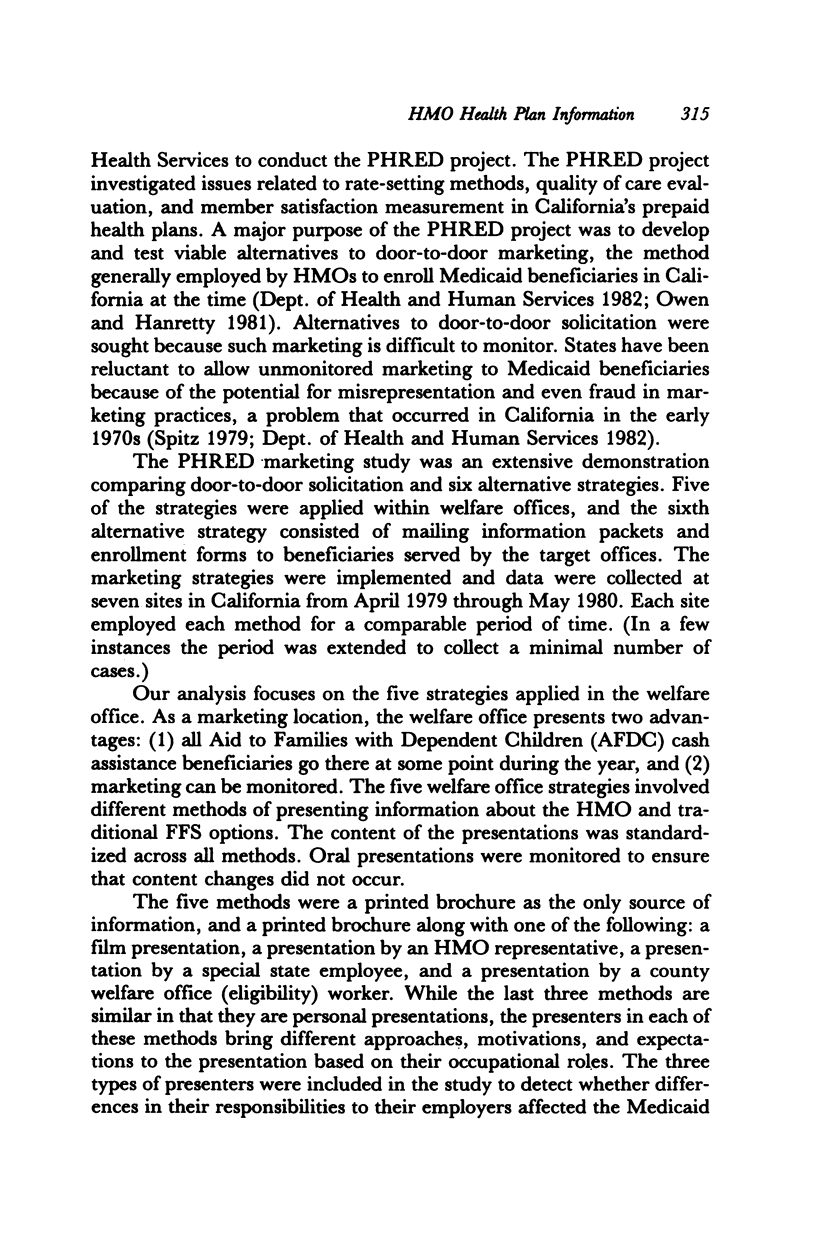
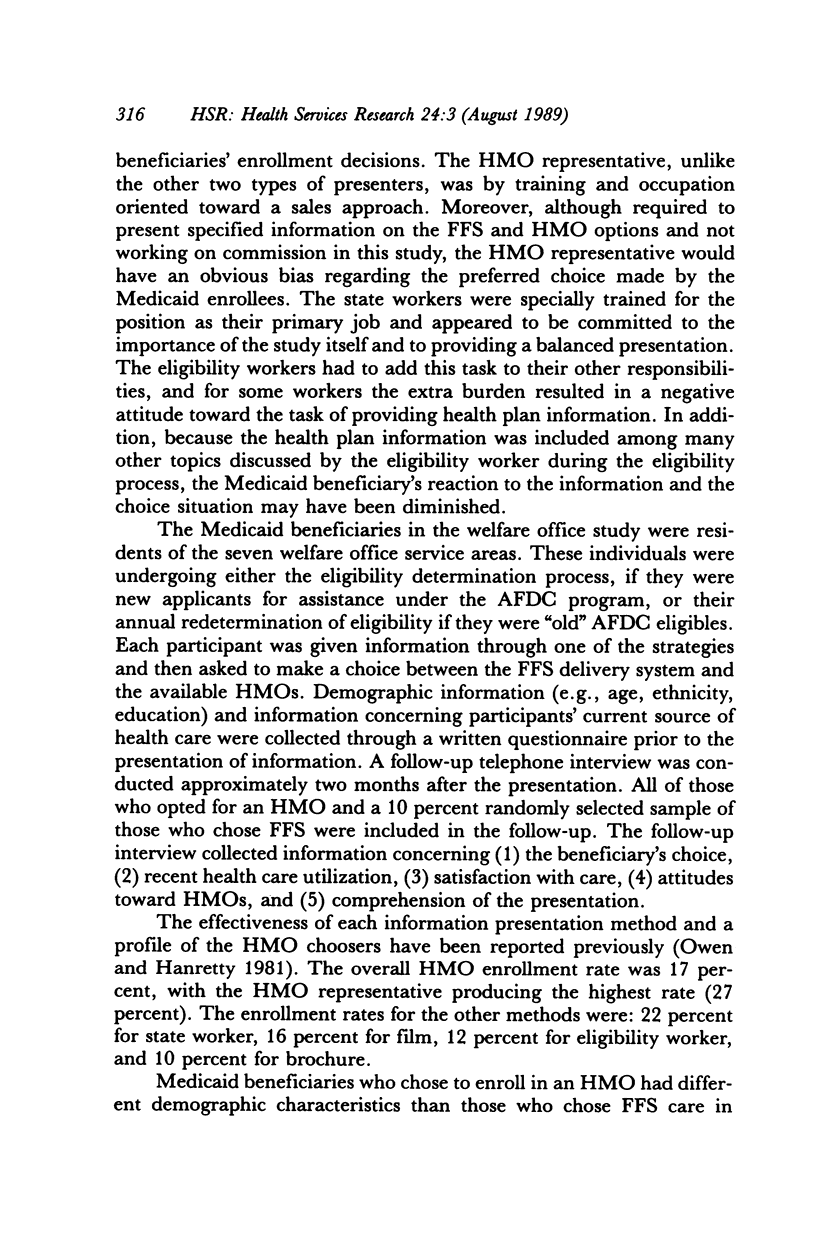
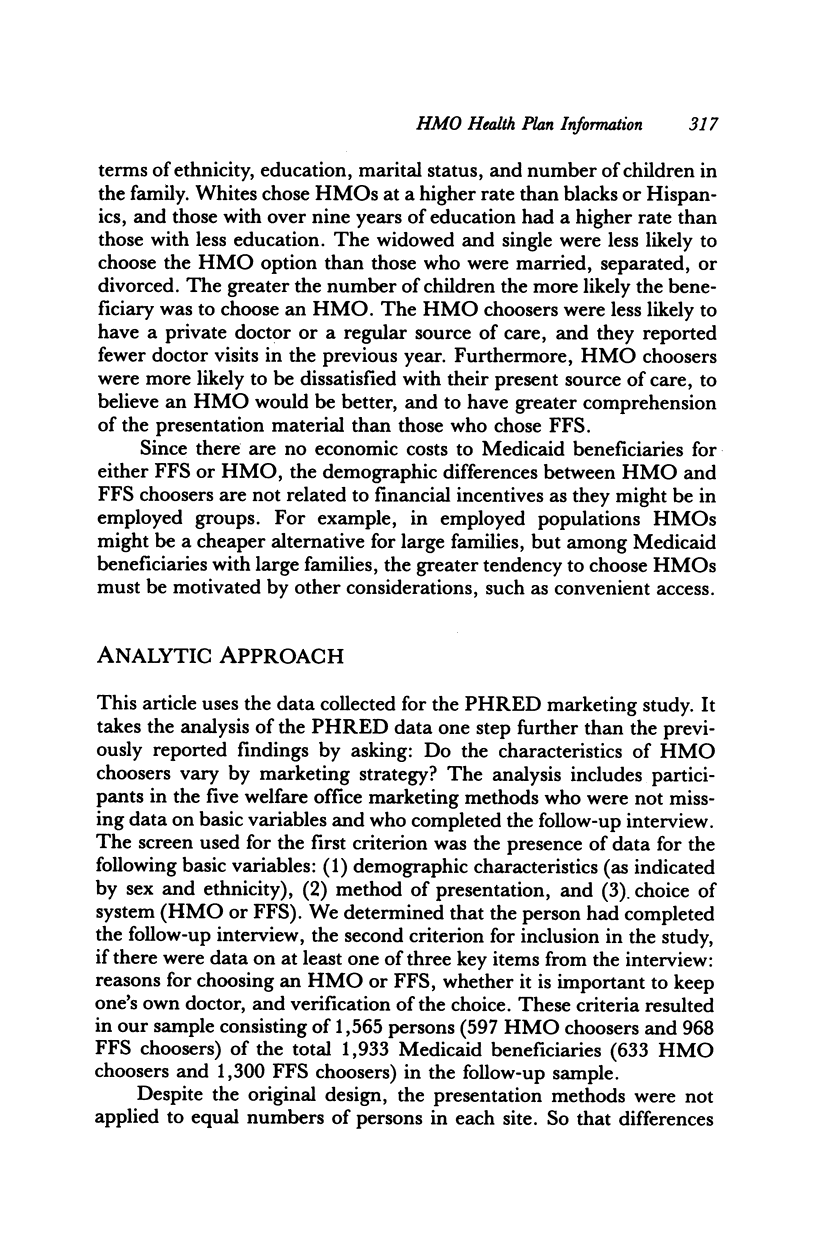
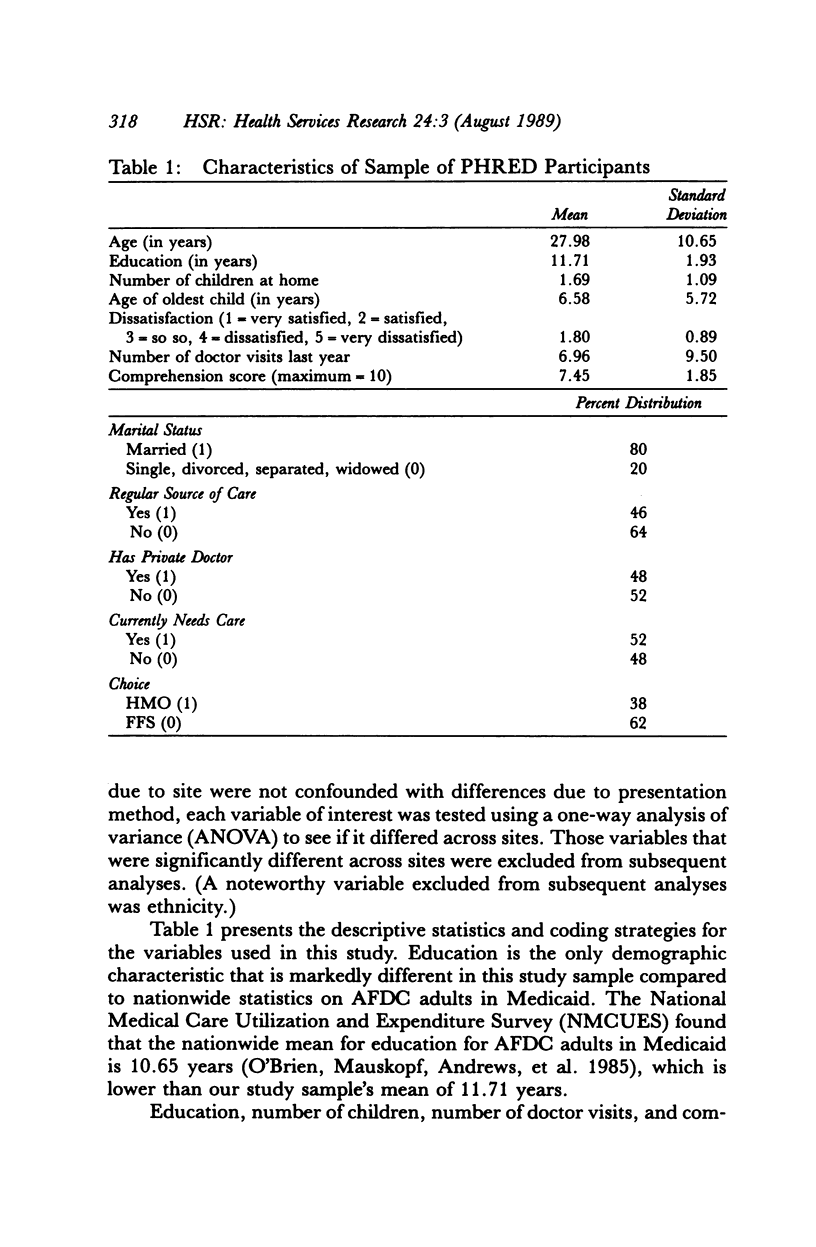
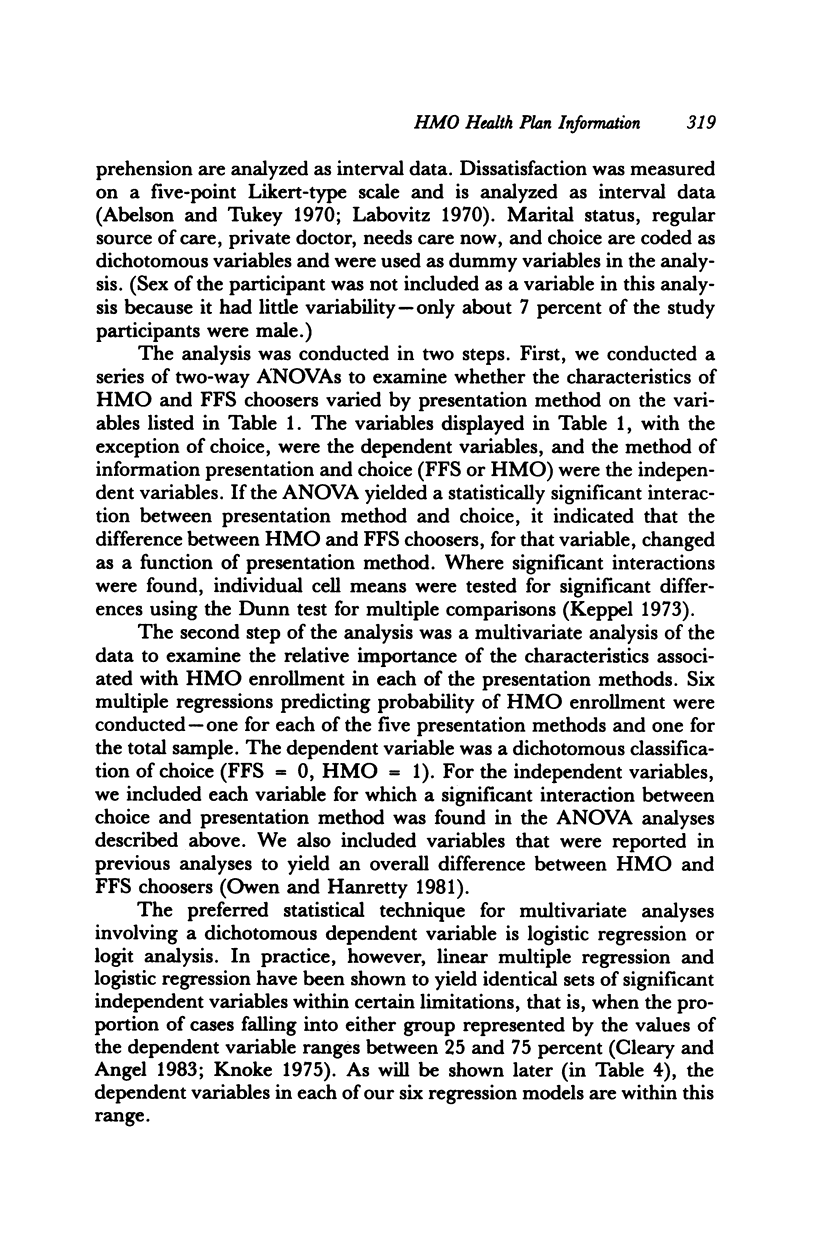
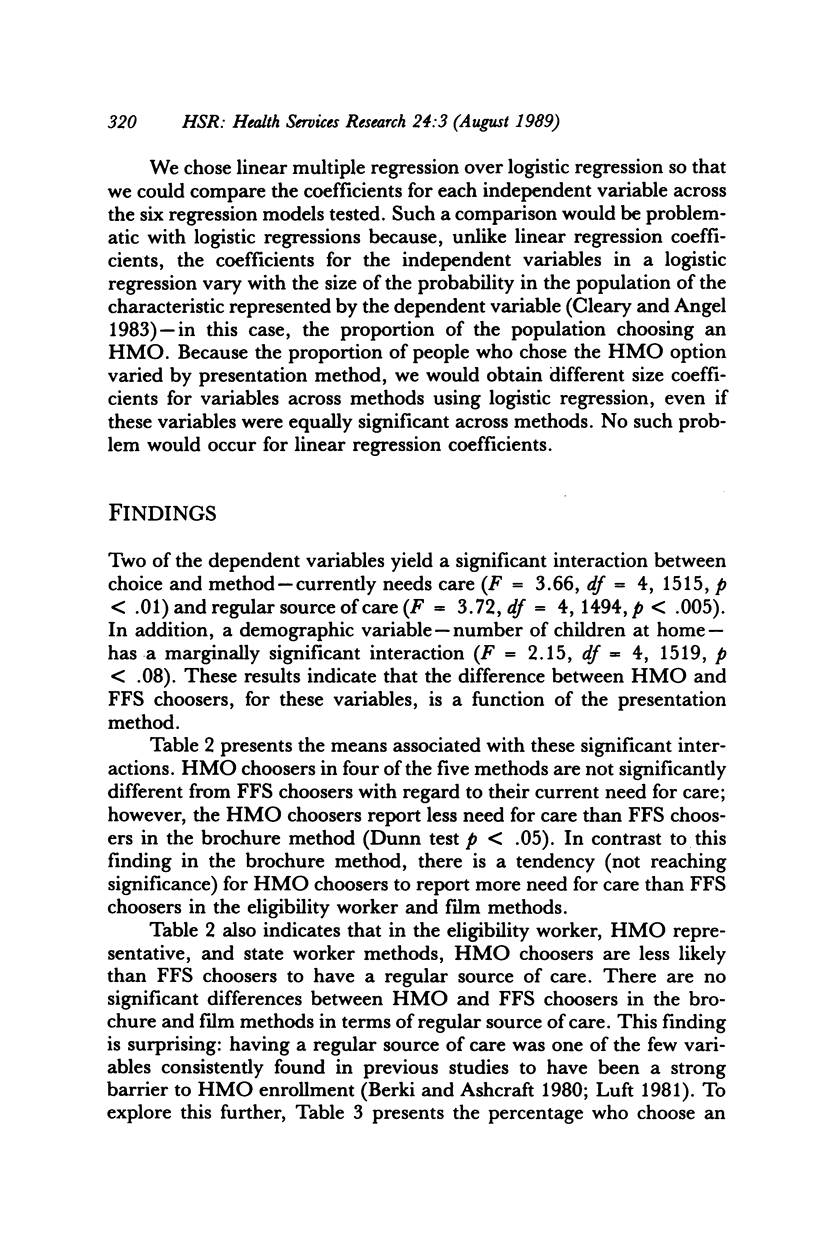
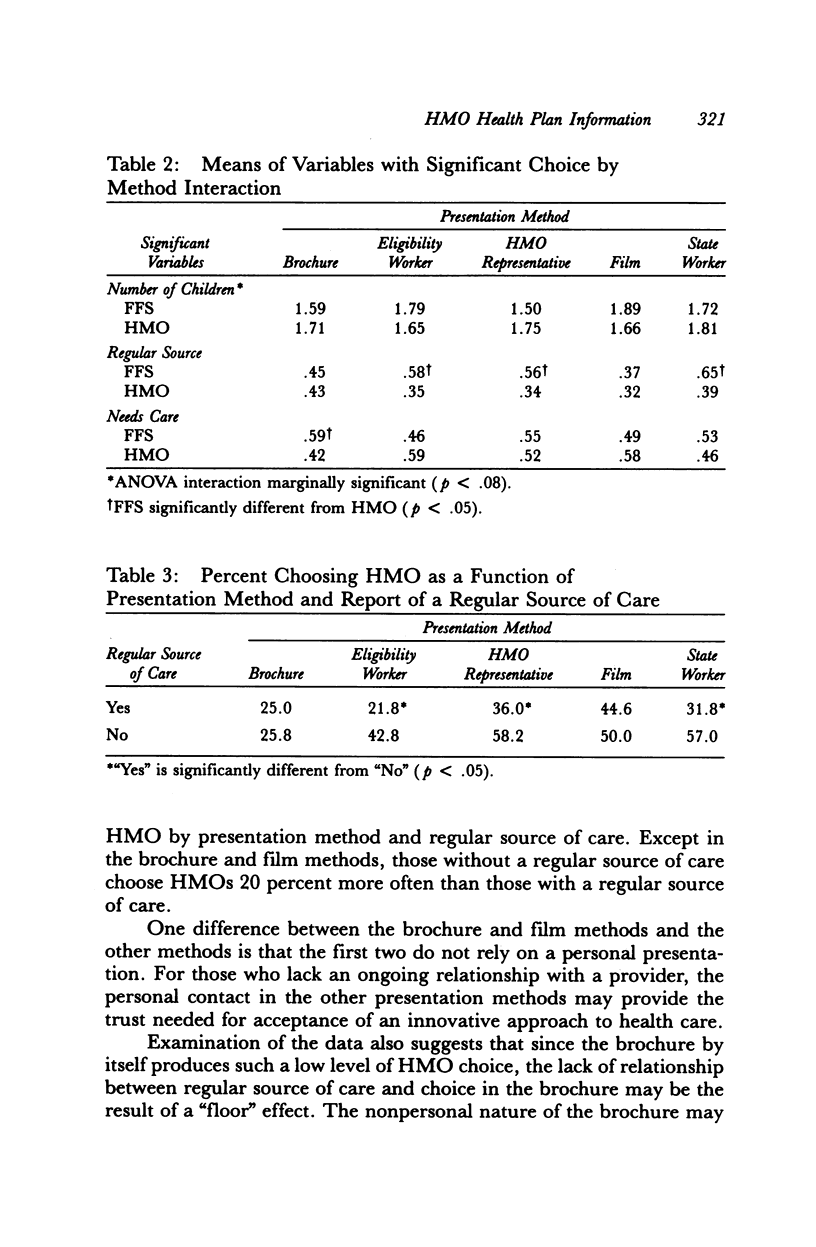

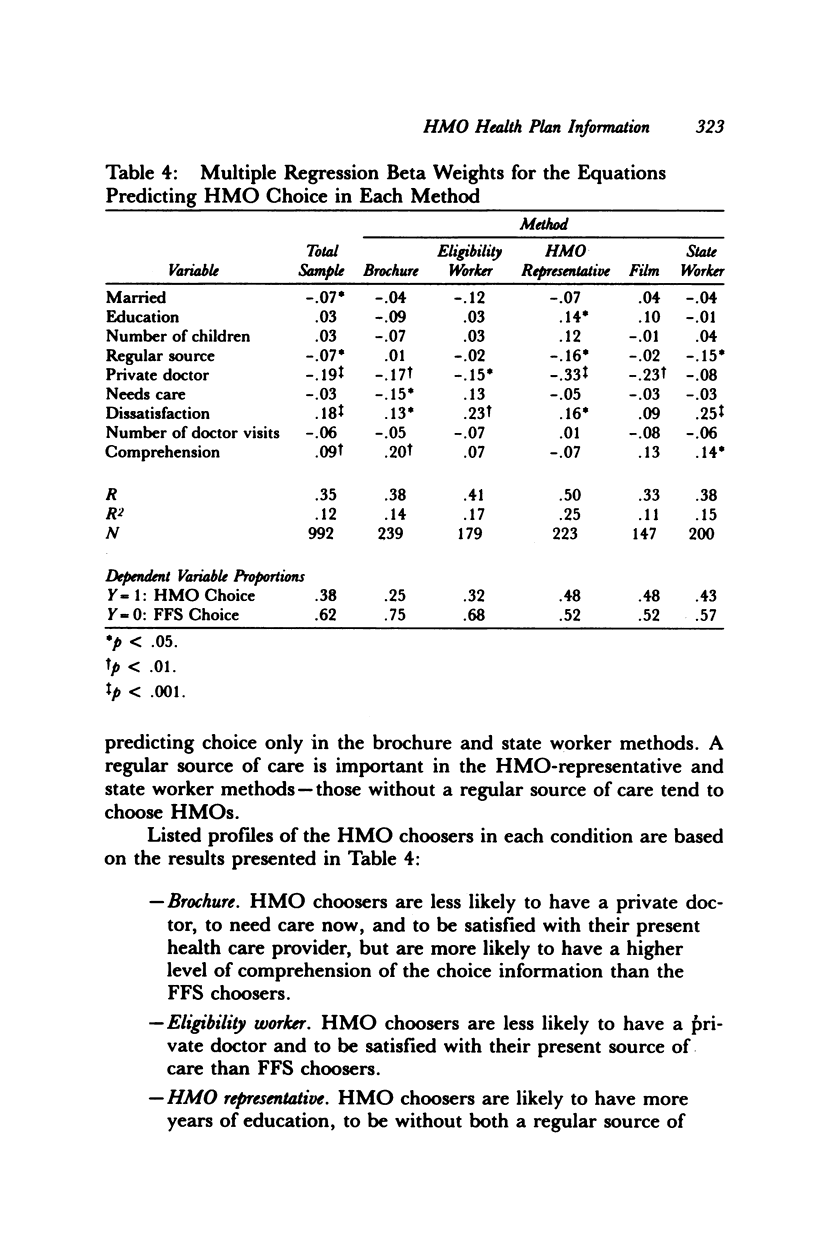
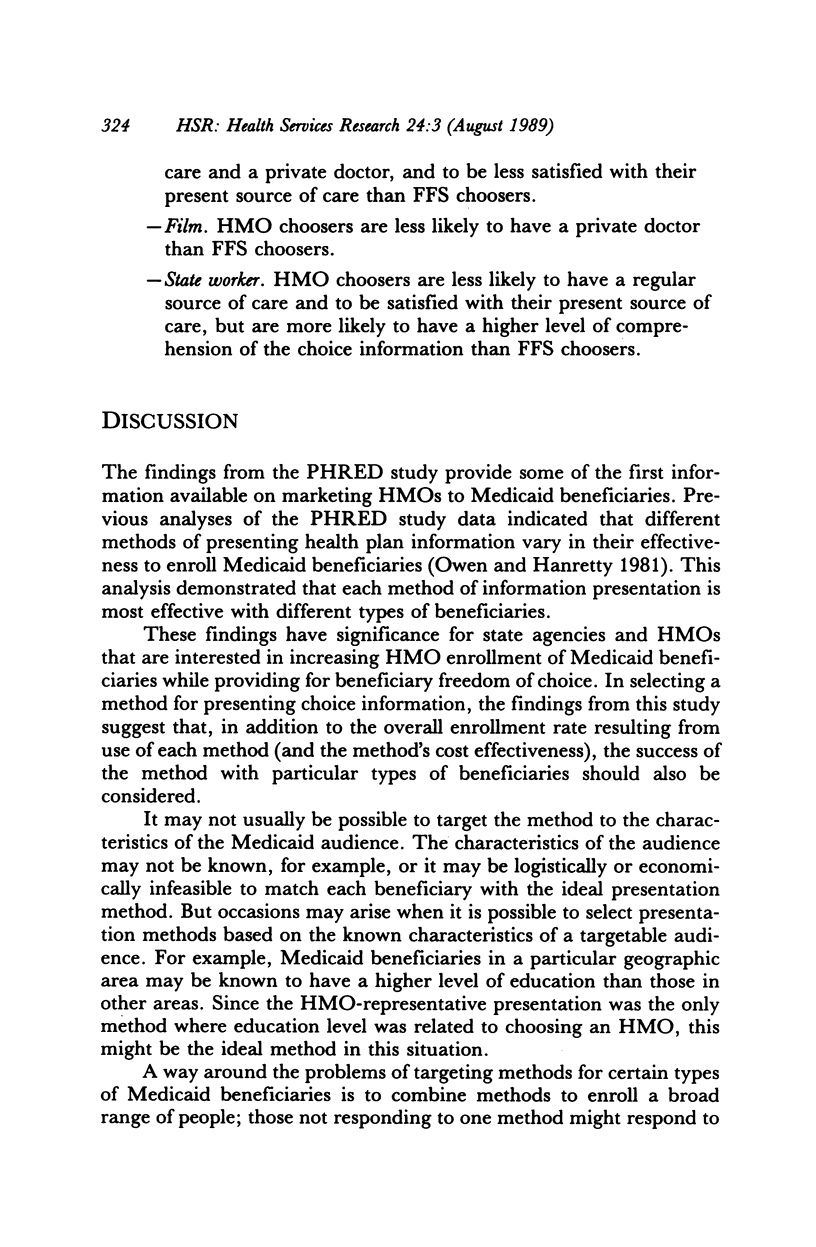
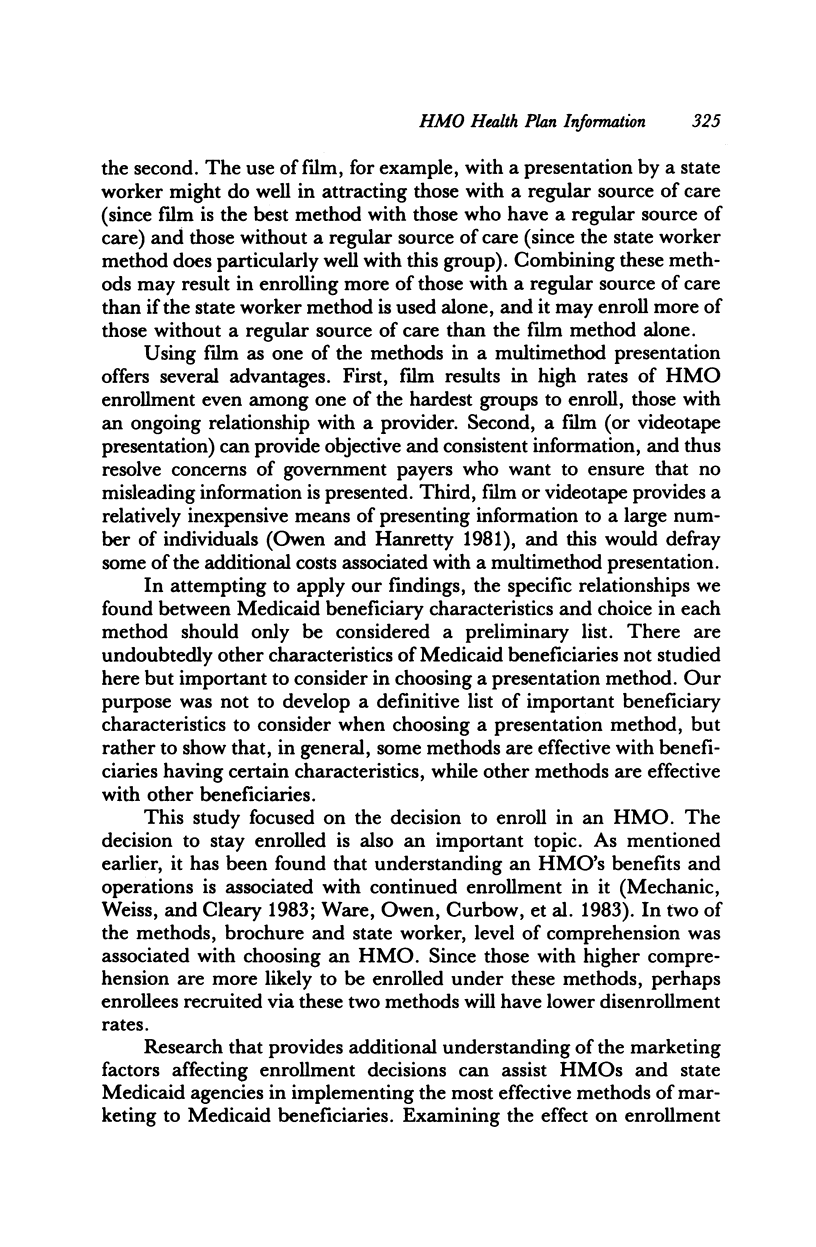
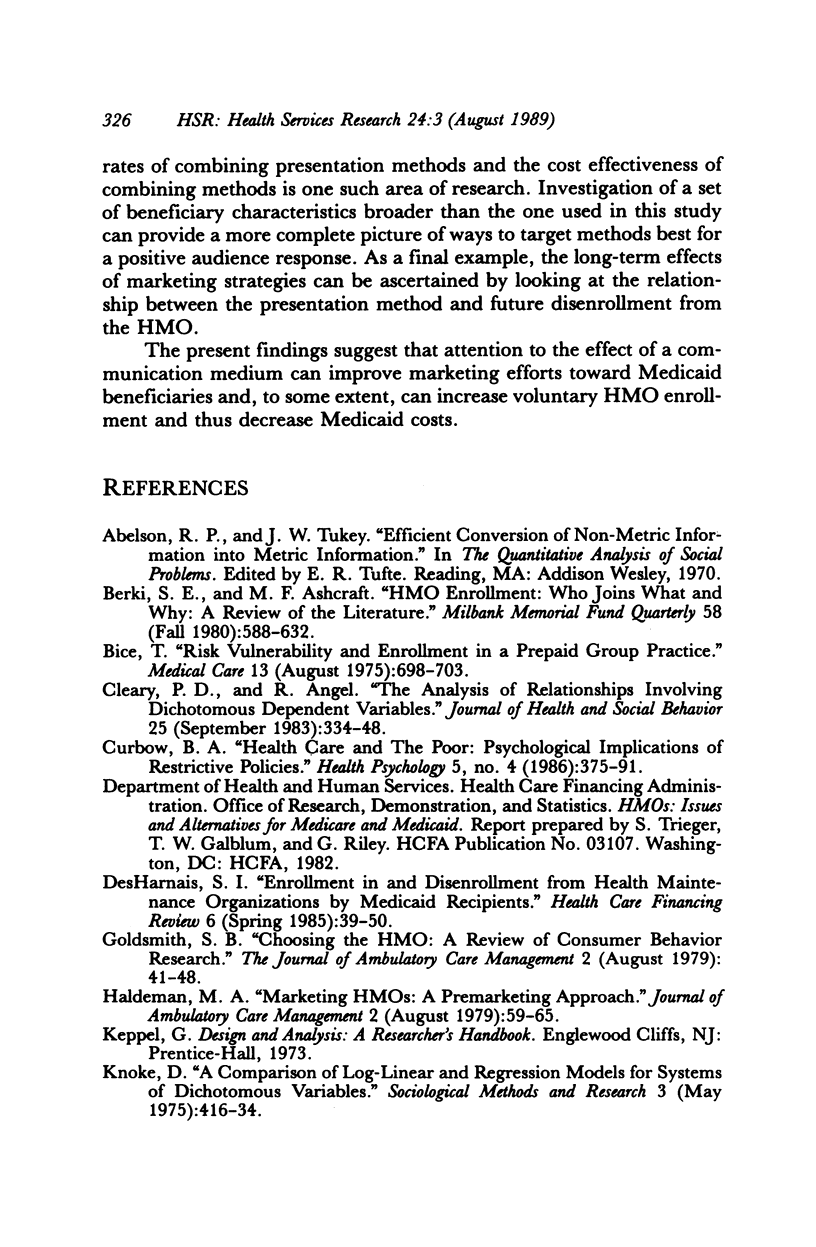
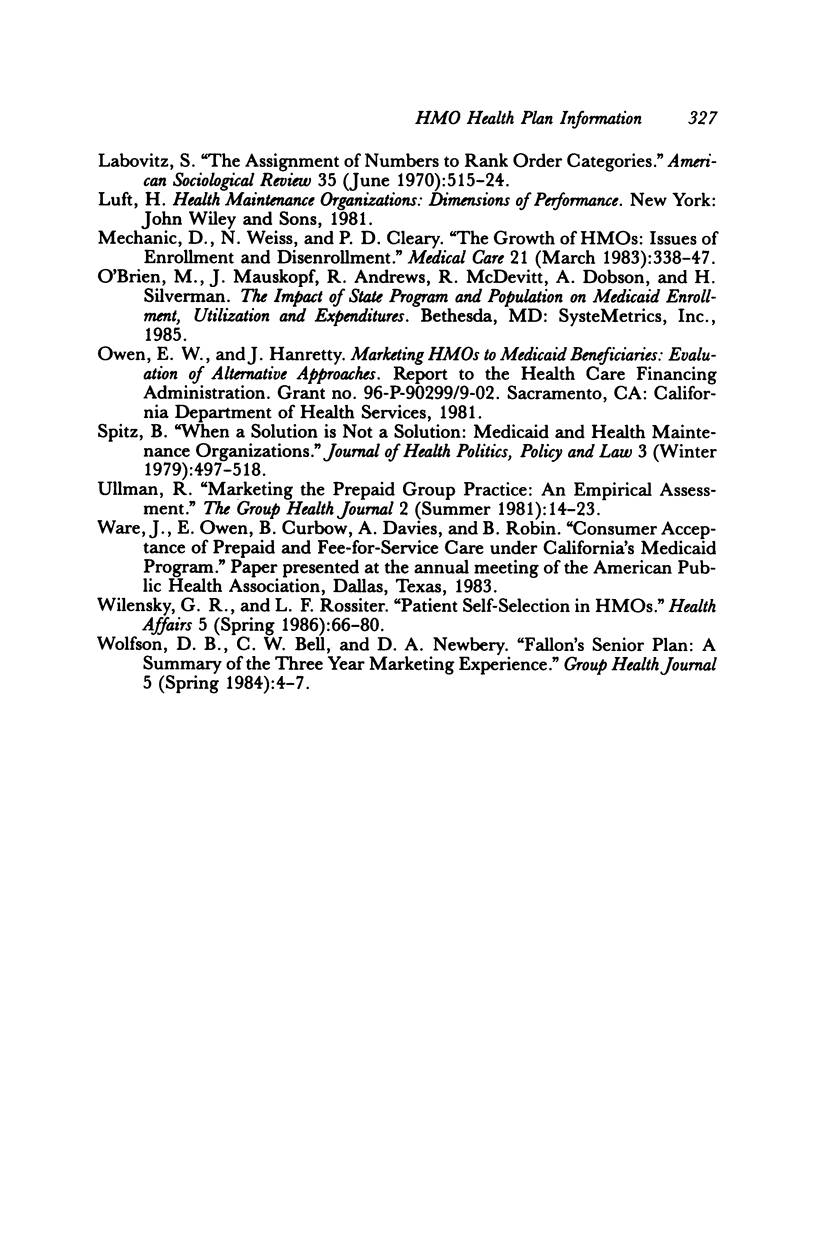
Selected References
These references are in PubMed. This may not be the complete list of references from this article.
- Berki S. E., Ashcraft M. L. HMO enrollment: who joins what and why: a review of the literature. Milbank Mem Fund Q Health Soc. 1980 Fall;58(4):588–632. [PubMed] [Google Scholar]
- Bice T. W. Risk vulnerability and enrollment in a prepaid group practice. Med Care. 1975 Aug;13(8):698–703. doi: 10.1097/00005650-197508000-00011. [DOI] [PubMed] [Google Scholar]
- Cleary P. D., Angel R. The analysis of relationships involving dichotomous dependent variables. J Health Soc Behav. 1984 Sep;25(3):334–348. [PubMed] [Google Scholar]
- Curbow B. Health care and the poor: psychological implications of restrictive policies. Health Psychol. 1986;5(4):375–391. doi: 10.1037//0278-6133.5.4.375. [DOI] [PubMed] [Google Scholar]
- DesHarnais S. I. Enrollment in and disenrollment from health maintenance organizations by Medicaid recipients. Health Care Financ Rev. 1985 Spring;6(3):39–50. [PMC free article] [PubMed] [Google Scholar]
- Goldsmith S. B. Choosing the HMO: a review of consumer behavior research. J Ambul Care Manage. 1979 Aug;2(3):41–48. doi: 10.1097/00004479-197908000-00006. [DOI] [PubMed] [Google Scholar]
- Mechanic D., Weiss N., Cleary P. D. The growth of HMOs: issues of enrollment and disenrollment. Med Care. 1983 Mar;21(3):338–347. doi: 10.1097/00005650-198303000-00006. [DOI] [PubMed] [Google Scholar]
- Spitz B. When a solution is not a solution: Medicaid and Health Maintenance Organizations. J Health Polit Policy Law. 1979 Winter;3(4):497–518. doi: 10.1215/03616878-3-4-497. [DOI] [PubMed] [Google Scholar]
- Ullman R. Marketing the prepaid group practice: an empirical assessment. Group Health J. 1981 Summer;2(2):14–23. [PubMed] [Google Scholar]
- Wilensky G. R., Rossiter L. F. Patient self-selection in HMOs. Health Aff (Millwood) 1986 Spring;5(1):66–80. doi: 10.1377/hlthaff.5.1.66. [DOI] [PubMed] [Google Scholar]


